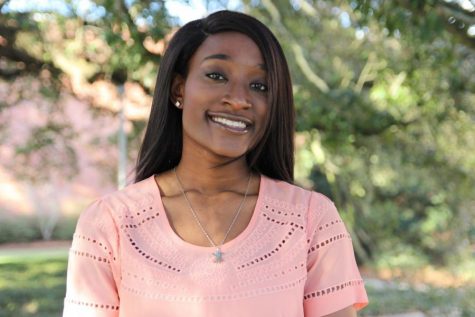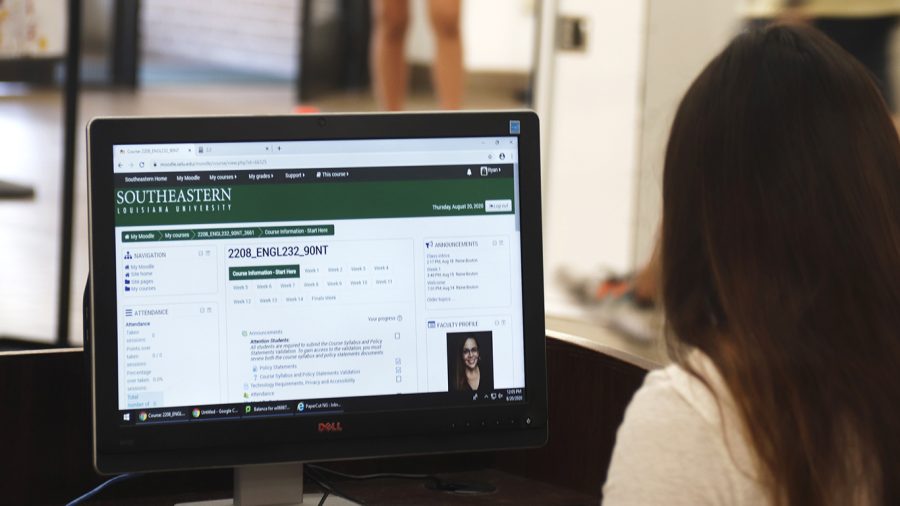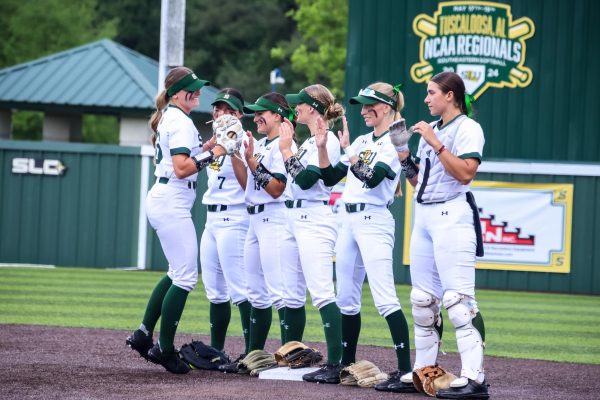Hybrid courses: a new academic experience for students
Jordyn Franklin
Students have been adjusting to the new format of hybrid classes, consisting of both classroom time and virtual participation. They shared their experiences with hybrid learning and discussed how the circumstances differ from previous semesters
After an abrupt closing of campus last spring in March, the university is finally returning to some normalcy by reopening the campus to faculty, staff and students.
As most classes are being conducted with a hybrid format, students are undergoing a different experience.
For some students, the new format for classes seems to have shaken things up.
Epiphany LaCour, a sophomore and nursing major, shared how she was not expecting it to be easy, but adjusting has been weird and a little uncomfortable for her.
“I don’t like online but I’m trying to make it work and motivate myself,” shared LaCour. “It has been stressful trying to understand and one of my professors doesn’t really know how to work Google Meet so I’ve been feeling lost because of that.”
LaCour shared that she does half-and-half for one class, with one day online and one in-person while the rest are optional. Since she is required to come on campus one day a week, she is afraid that she will get her family sick.
“As of right now, I am just not really comfortable with studying on campus because I don’t want to bring anything back to my brother and sister when I visit home. I prefer to do as much at my place as I can, especially since I have everything I need here.”
LaCour is hopeful that things will go back to normal next year if everyone follows the rules and wears a mask.
“Maybe next semester, I guess, if everyone wears a medical mask and keeps their distance,” said LaCour.
On the other hand, students like Brittany Thomas, a senior business management, have also decided to stay home and take classes online, but have been struggling with their lack of campus involvement.
“This will be my first time doing 15 credit hours all online from home,” said Thomas. “I am used to being involved on campus and being able to be taught face-to-face. Saying this, it is beyond different for me. It has been difficult for me to focus on all five classes at home surrounded by all the natural disasters and storms.”
Thomas commented on how it can also be demanding due to all the emails of instructions for assignments. She feels that students can easily get pulled into the sea of due dates and some professors are emailing out sets of directions for multiple assignments at once.
“The challenging part about these online classes is that the due dates and assignments can be difficult to understand being that they are sent with confusing explanations,” said Thomas.
Thomas does not come to campus at all and says staying healthy is her top priority and although she is grateful that it has been easy to get in touch with all her professors thus far, she is still worried about the ongoing semester.
“Being able to communicate with my professors has been an easy task, as they are very understanding at these times,” said Thomas. “But my concerns would be if there are more natural disasters, how will the semester continue to roll? How will professors get through their material if there are weeks off because of these natural disasters?”
Other schools have also taken similar precautions and are pushing for students to take as many online courses as possible while still offering hybrid classes.
As of now the university is continuing to steamroll ahead taking all of the CDC’s guidelines into consideration.
Your donation will support The Lion's Roar student journalists at Southeastern Louisiana University.
In addition, your contribution will allow us to cover our annual website hosting costs.
No gift is too small.

Trinity Brown is a communication major with a concentration in electronic media and a Baton Rouge native. She is very active on campus as an SGA senator,...






